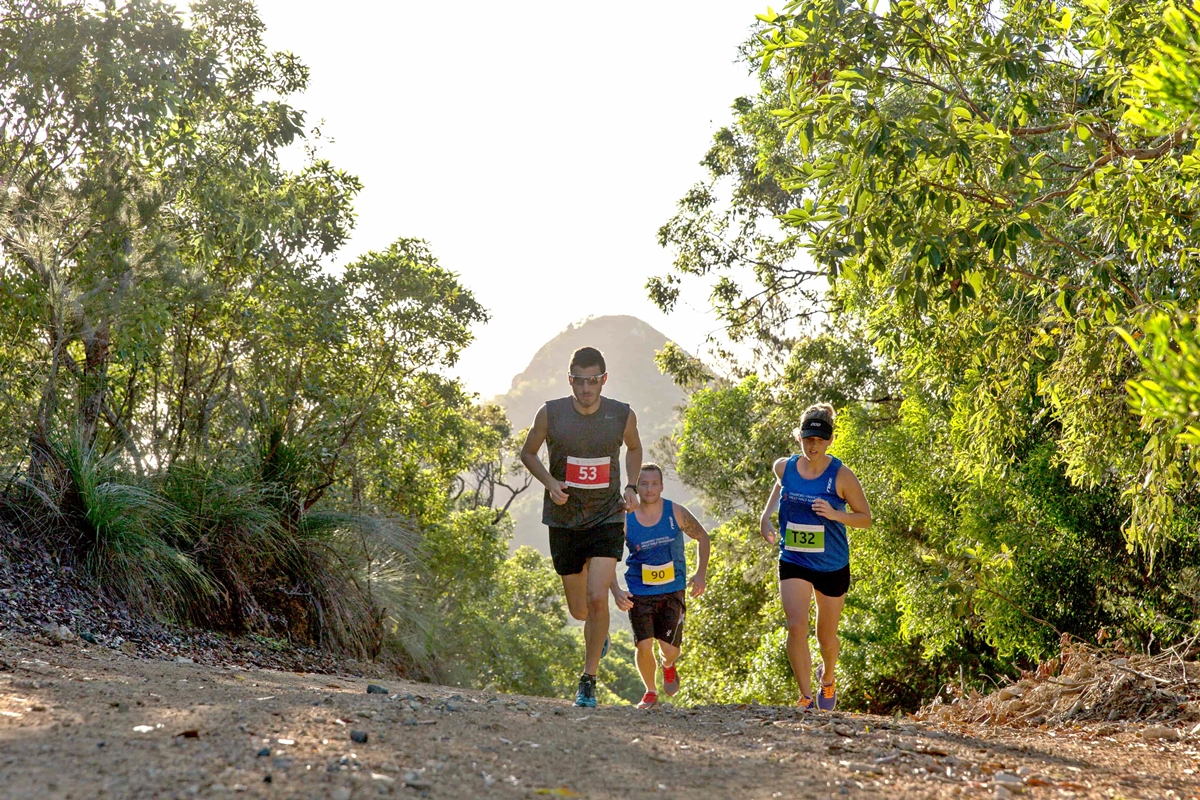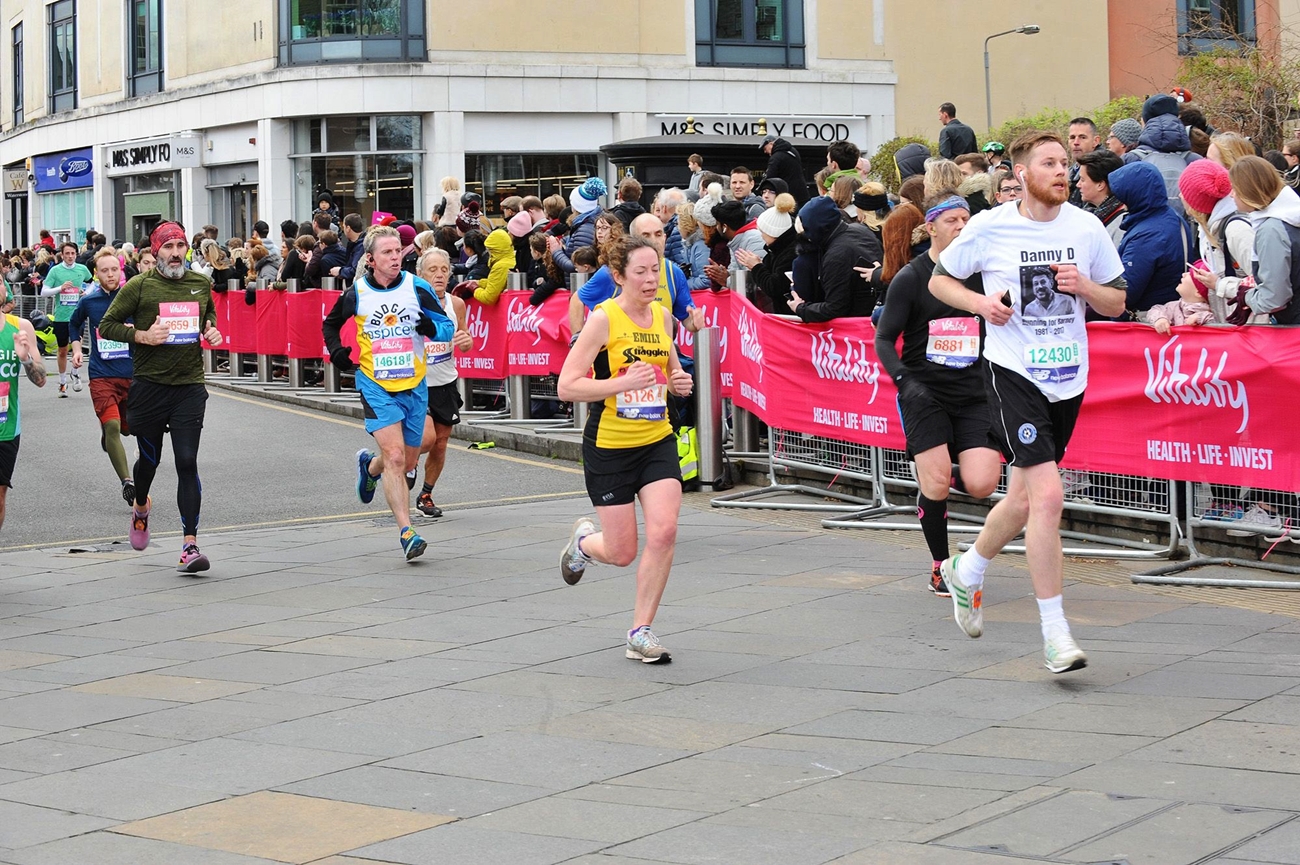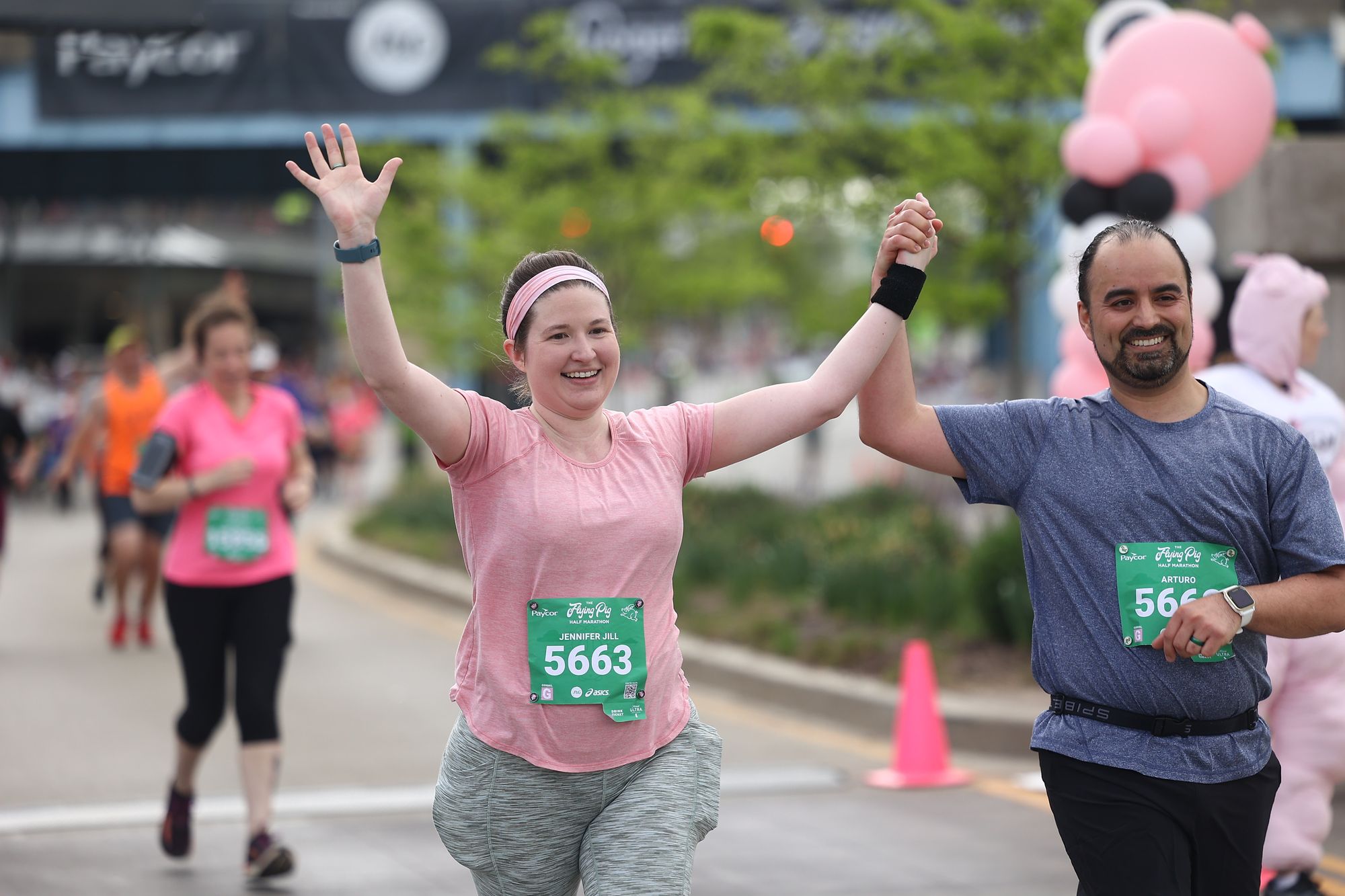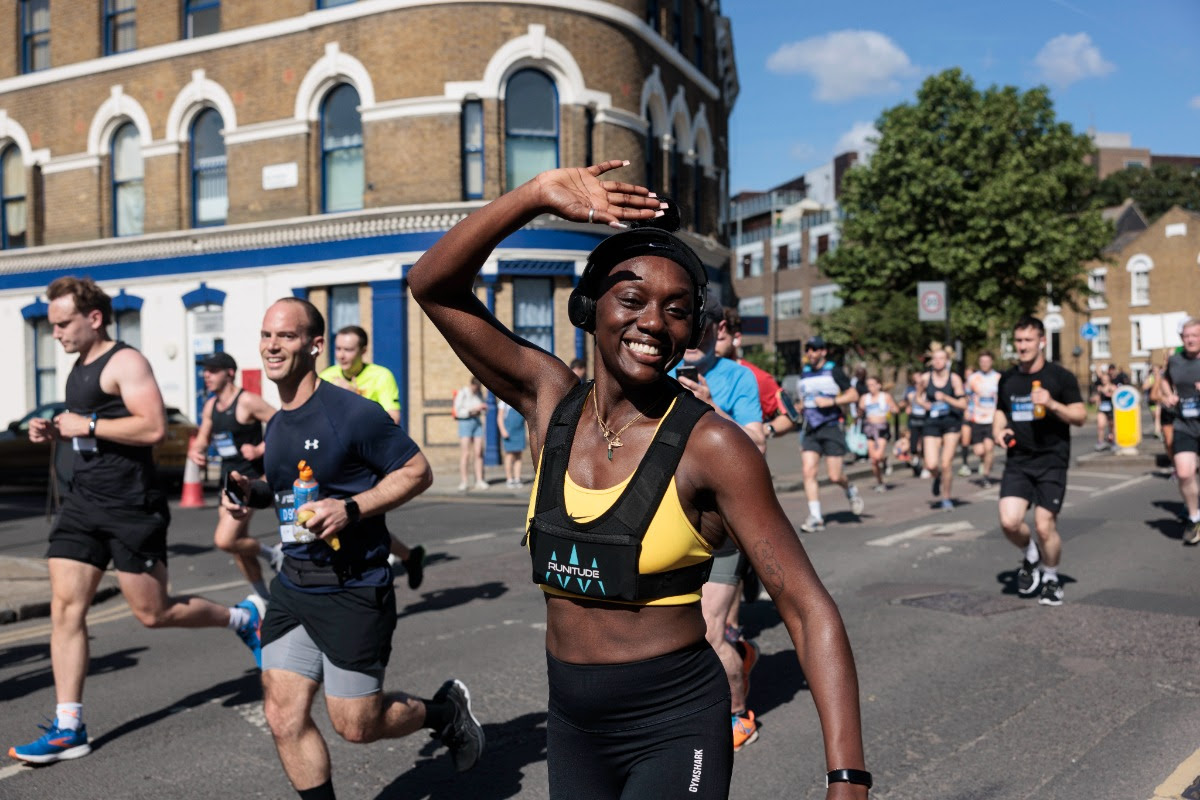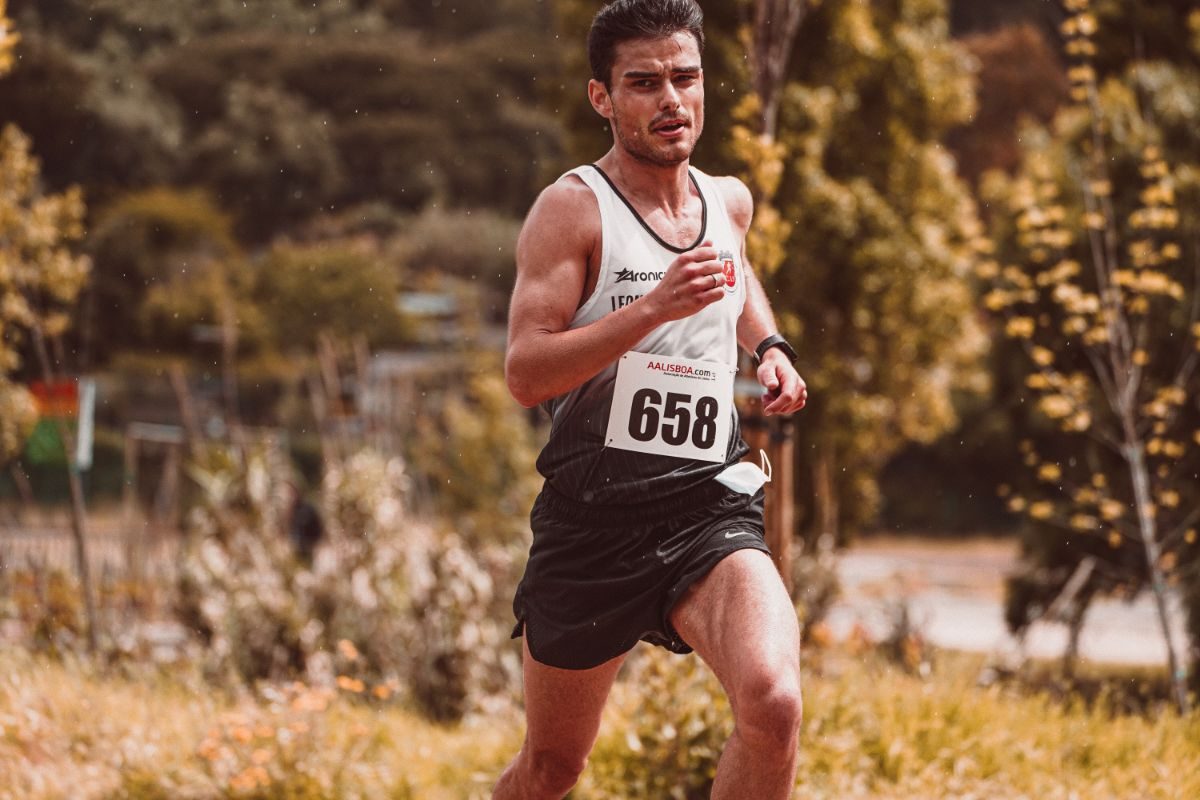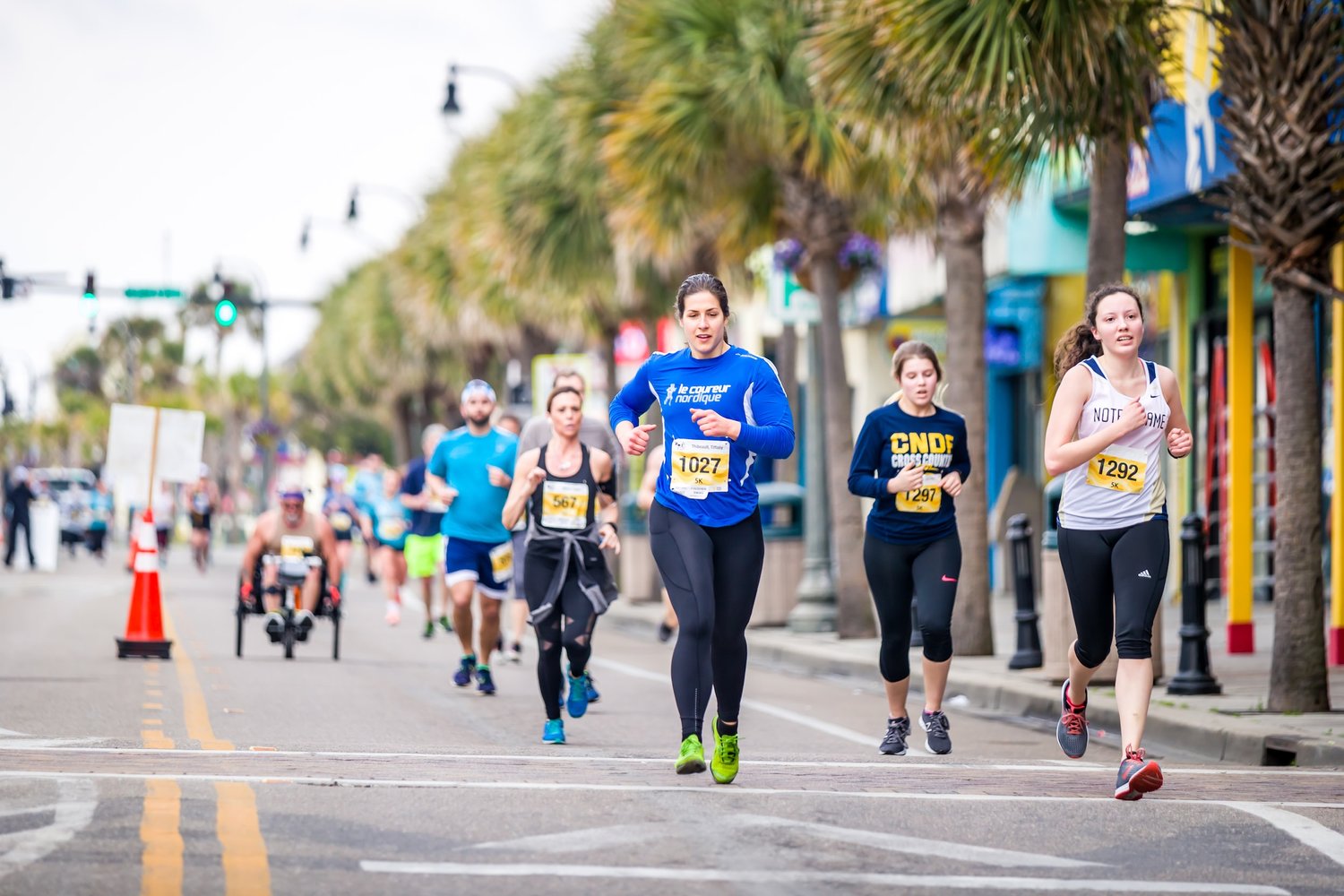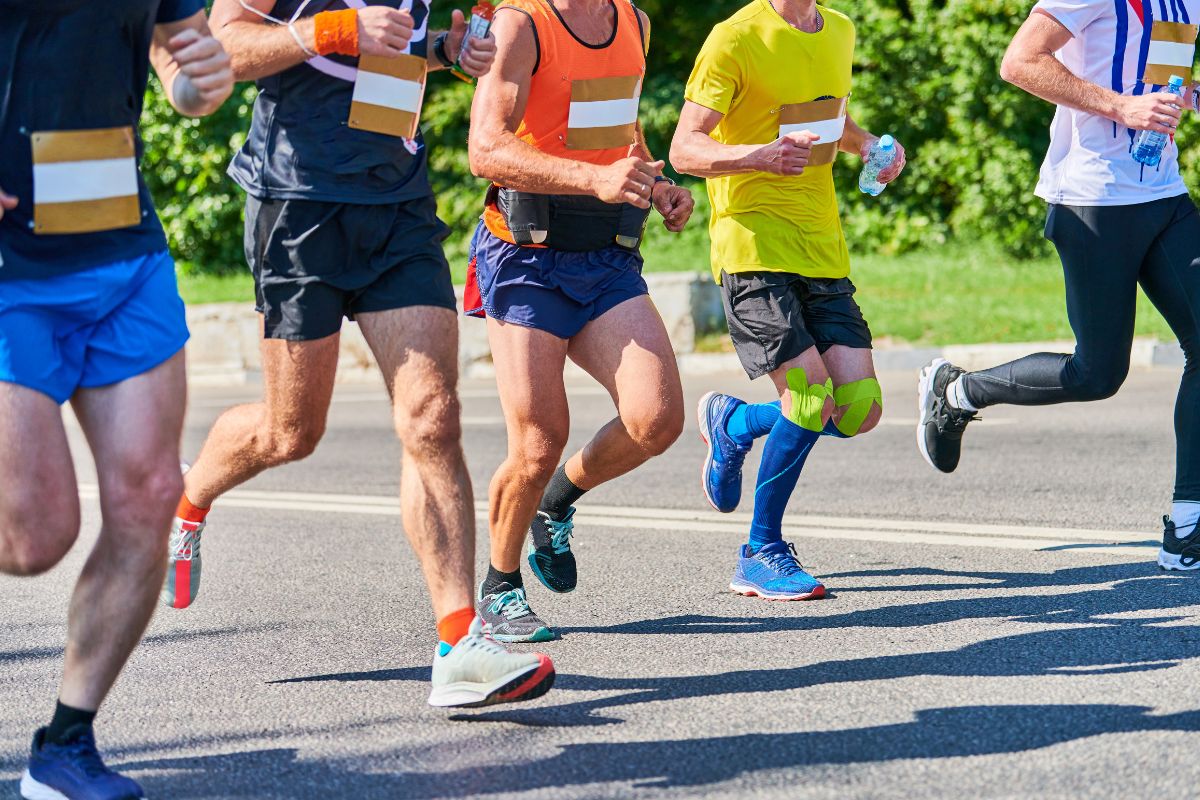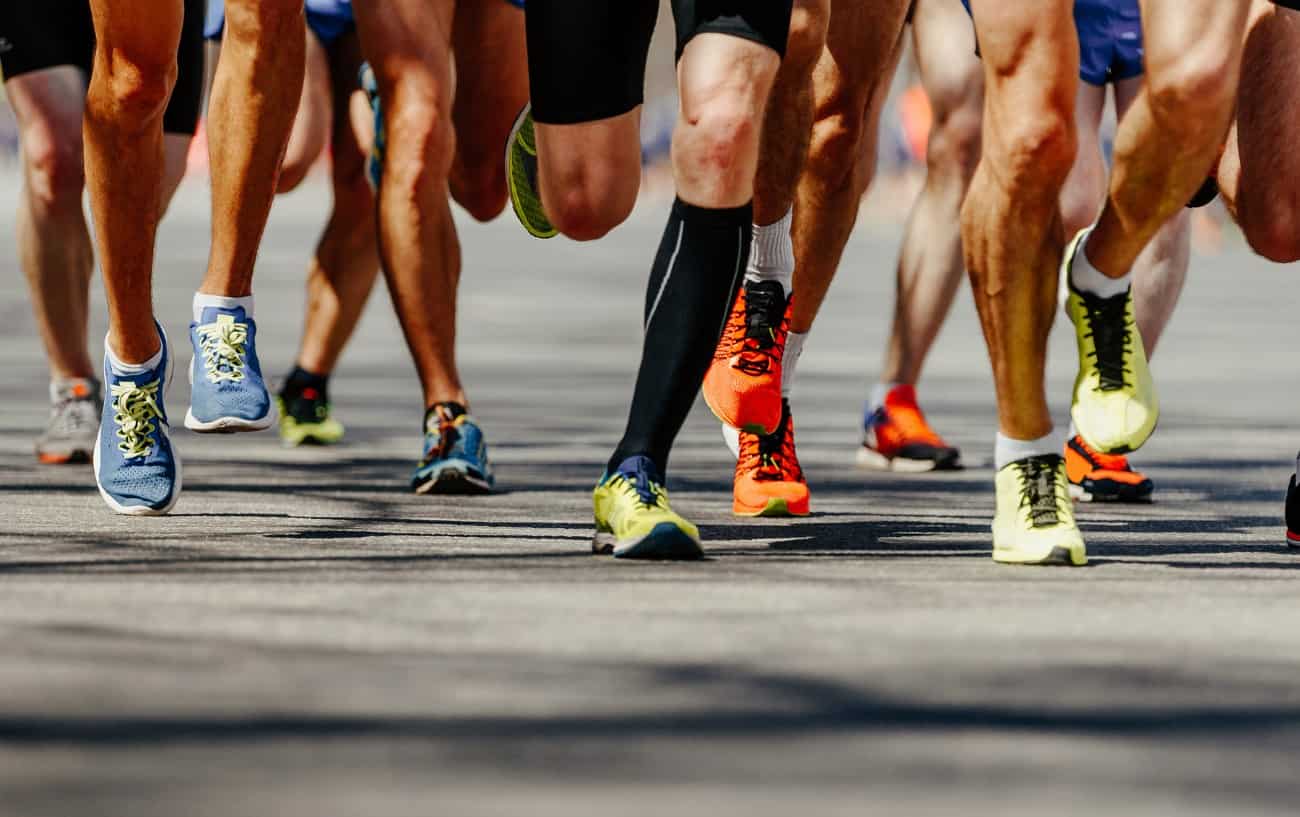

Featured
How Long To Walk A Half Marathon
Modified: January 22, 2024
Looking to complete a half marathon? Discover how long it takes to walk a half marathon and get featured tips for a successful journey.
Introduction
Welcome to the world of half marathons, where endurance and determination meet the thrill of crossing the finish line. Walking a half marathon can be an incredibly fulfilling and challenging feat, whether you are a seasoned walker or a newcomer to the world of long-distance walking.
But before we dive into the details of how long it takes to walk a half marathon, let’s first understand what exactly a half marathon is. A half marathon is a road race that covers a distance of 13.1 miles or 21.1 kilometers. It is a popular choice for many individuals who want to test their fitness level, achieve a personal goal, or simply enjoy the experience of being part of a large-scale athletic event.
When it comes to walking a half marathon, the time it takes can vary significantly depending on several factors. Your physical fitness level, training regimen, walking speed, and terrain are just a few of the variables that can affect your walking time.
In this comprehensive guide, we will explore the various factors that can affect your walking time for a half marathon, as well as provide practical tips and strategies to help you successfully complete the race. Whether you are aiming to set a personal record or simply want to enjoy the journey, we’ve got you covered.
So, strap on your walking shoes, grab your water bottle, and let’s dive into the world of walking a half marathon. By the end of this guide, you’ll be equipped with all the knowledge and tools you need to take on this exciting challenge.
Understanding a Half Marathon
Before embarking on your half marathon walking journey, it’s important to have a clear understanding of what exactly a half marathon entails. As mentioned earlier, a half marathon is a road race that covers a distance of 13.1 miles or 21.1 kilometers.
Half marathons are a popular choice among both seasoned athletes and casual walkers because they offer a significant challenge without the same level of training required for a full marathon. They provide a unique opportunity for individuals to push themselves physically and mentally, while still allowing for a manageable training schedule.
The half marathon distance originated in the United States in the 1960s and has since gained popularity worldwide. It has become a staple in the running and walking community, with thousands of events held each year to cater to participants of all ages and abilities.
One of the key benefits of a half marathon is the sense of accomplishment and achievement that comes with completing such a significant distance. Crossing the finish line after walking 13.1 miles can be an incredibly rewarding experience, motivating individuals to set and achieve new goals in their fitness journey.
It’s important to note that half marathons are not only about the physical challenge. They also create opportunities for individuals to engage with like-minded individuals, develop resilience, and foster a sense of community. The camaraderie and support among participants can make the half marathon experience even more fulfilling.
Half marathons often feature a variety of terrains, including urban settings, scenic routes, and even trail paths. This diversity adds to the appeal of the event, offering participants a chance to explore new surroundings and enjoy the beauty of their surroundings as they walk towards the finish line.
Now that you have a better understanding of what a half marathon entails, let’s explore the factors that can affect your walking time for this distance.
Factors Affecting Walking Time
When it comes to walking a half marathon, there are several key factors that can affect your overall walking time. It’s important to consider these factors as they can help you set realistic expectations and plan your training and race strategy accordingly.
1. Fitness Level: Your current fitness level plays a significant role in determining how long it will take you to walk a half marathon. Individuals who have a higher level of fitness and are accustomed to regular physical activity may be able to complete the distance at a faster pace compared to those who are new to walking or have a lower fitness level.
2. Training Regimen: The time and effort you invest in your training will directly impact your walking time. Following a well-designed training plan that includes a mix of long walks, speed work, and strength training can help improve your endurance, speed, and overall walking performance.
3. Walking Speed: Your walking speed is another crucial factor in determining how long it will take you to complete a half marathon. Walking speed is typically measured in minutes per mile or kilometers per hour. Finding a comfortable and sustainable walking speed will largely depend on your fitness level and personal preference.
4. Terrain: The terrain of the race course can significantly impact your walking time. Walking on flat, paved surfaces may allow for a faster pace compared to hilly or uneven terrains. When training, it’s beneficial to include walks on similar terrains to the race course to familiarize yourself with the challenges you may encounter.
5. Weather Conditions: Weather conditions can also play a role in your walking time. Walking in extreme heat, humidity, or strong winds can impact your energy levels and overall performance. It’s important to consider the weather forecast and plan accordingly by staying hydrated and adjusting your pace if needed.
6. Rest and Recovery: Proper rest and recovery are essential for optimal performance. Overtraining or inadequate rest can lead to fatigue, muscle soreness, and slower walking times. Incorporate rest days into your training schedule and prioritize quality sleep to ensure your body is well-rested and ready for the half marathon.
It’s important to keep in mind that every individual is unique, and these factors will affect each person differently. It’s essential to listen to your body, adapt your training and race strategy accordingly, and set realistic goals based on your personal circumstances.
Now that we’ve explored the factors that can affect your walking time, let’s dive into the next section, which focuses on training for a half marathon walk.
Training for a Half Marathon Walk
Preparing yourself physically and mentally is crucial to successfully walk a half marathon. Training for a half marathon walk involves gradually building your endurance, improving your walking speed, and developing the mental fortitude to tackle the distance. Here are some key aspects to consider in your training regimen:
1. Establish a Training Schedule: Create a training schedule that suits your lifestyle and allows for progressive increases in distance and intensity. Aim to walk at least 4-5 times a week, with a combination of shorter walks, longer walks, and rest days to promote recovery.
2. Gradually Increase Distance: Start with shorter distances and gradually increase your mileage each week. The 10% rule is commonly recommended, which suggests not increasing your weekly distance by more than 10% to prevent overuse injuries and allow your body to adapt.
3. Incorporate Different Training Types: Include a variety of training types to improve your overall fitness. This can include long, steady walks to build endurance, interval training to improve speed, and hill training to strengthen your legs for uneven terrains.
4. Practice Walking at Race Pace: Incorporate training sessions where you aim to walk at your target race pace. This will help you get accustomed to the speed and effort required to maintain that pace during the actual event.
5. Cross-Train and Strengthen: Engaging in cross-training activities such as swimming, cycling, or strength training can improve your overall fitness, prevent overuse injuries, and enhance your walking performance.
6. Focus on Recovery: Allow for proper recovery time between training sessions. This includes incorporating rest days, stretching, foam rolling, and other recovery techniques to reduce muscle soreness and prevent burnout.
7. Mental Preparation: Train your mind as well as your body. Visualize yourself crossing the finish line, practice positive self-talk, and develop mental strategies to overcome challenges during the race. Mental preparation is just as important as physical training.
Remember, training is a personalized journey, and it’s crucial to listen to your body. If you experience pain or excessive fatigue, consider adjusting your training plan or seeking guidance from a healthcare professional or experienced coach.
Now that you have a clear understanding of the training process, let’s move on to discussing the recommended walking speed for a half marathon walk.
Recommended Walking Speed
When it comes to walking a half marathon, finding the right pace is essential for both enjoyment and achieving your goals. Walking speed is typically measured in minutes per mile or kilometers per hour. However, it’s important to note that the recommended walking speed can vary depending on individual fitness levels and goals.
For most individuals walking a half marathon, a brisk walking pace of around 15-20 minutes per mile or 9-12 minutes per kilometer is a reasonable target. This pace allows for a steady, sustainable effort over the course of the 13.1-mile distance.
Remember that finding a comfortable and sustainable pace is key. Pushing yourself too hard at the beginning of the race may result in burnout or fatigue later on. It’s important to establish a rhythm and maintain a consistent pace throughout the entire course.
It’s worth mentioning that during an official half marathon event, there may be time constraints and cut-off times. Make sure to familiarize yourself with the event rules and guidelines, particularly if you plan on participating in a timed race. Thus, it’s important to factor in these time constraints when setting your target walking speed.
However, it’s important to remember that completing a half marathon is not solely about speed. It’s a personal journey that should be about enjoying the experience, challenging yourself, and crossing the finish line. The most important thing is to set realistic goals based on your abilities and focus on achieving a sense of accomplishment, rather than solely focusing on the clock.
If your goal is to improve your walking speed and set a personal record, incorporating interval training, speed work, and strength training into your training regimen can help you increase your pace over time. However, always prioritize gradual progression and listen to your body to avoid injuries.
Ultimately, the recommended walking speed is subjective and will vary from person to person. It’s crucial to find a pace that feels comfortable for you and allows you to enjoy the journey while still challenging yourself to achieve your goals.
Now that we have discussed the recommended walking speed, let’s move on to exploring strategies for completing a half marathon walk.
Strategies for Completing a Half Marathon Walk
Completing a half marathon walk is an achievement that requires both physical and mental preparation. To help you successfully cross the finish line, here are some strategies to consider:
1. Pace Yourself: Begin the race at a pace that feels comfortable for you. It’s easy to get caught up in the excitement and start too fast, leading to burnout later on. Starting at a steady pace allows you to conserve energy and maintain a consistent stride throughout the entire distance.
2. Break the Distance into Sections: Mentally divide the race into manageable sections, such as breaking it down by mile or kilometer markers. Focusing on smaller goals helps keep you motivated and less overwhelmed by the overall distance.
3. Take Regular Walk Breaks: Incorporate walk breaks into your race strategy from the beginning. Walking for a short period at regular intervals can help conserve energy, prevent muscle fatigue, and maintain a steady pace. Experiment with different walk-to-run intervals and find what works best for you.
4. Hydrate and Fuel Properly: Stay well-hydrated throughout the race by drinking water at aid stations or carrying your own hydration pack. Fuel your body with easily digestible foods like energy gels, bananas, or granola bars to maintain energy levels and prevent fatigue.
5. Listen to Your Body: Pay attention to any signs of fatigue or discomfort during the race. Do not hesitate to slow down, adjust your pace, or even take a short break if needed. Pushing through discomfort can lead to injuries, so it’s important to prioritize your well-being.
6. Use Positive Self-Talk: Maintain a positive mindset throughout the race. Remind yourself of your training, stay motivated, and use affirmations to keep your spirits high. Visualizing yourself crossing the finish line can be a powerful tool to boost confidence and motivation.
7. Stay Engaged and Enjoy the Experience: Take in the sights and sounds of the race. Interact with fellow participants, appreciate the scenery, and enjoy the journey. The half marathon experience is not just about reaching the finish line; it’s about the memories and the sense of accomplishment that come along the way.
Remember, every individual is different, and it’s important to find the strategies that work best for you. Practice these strategies during your training walks so that they become second nature on race day.
Now that we’ve discussed strategies for completing a half marathon walk, let’s move on to valuable tips and advice to help you prepare for the race.
Tips for a Successful Half Marathon Walk
Walking a half marathon is a significant challenge, but with the right preparation and mindset, you can have a successful and enjoyable experience. Here are some valuable tips to keep in mind as you prepare for your race:
1. Set Realistic Goals: Establish realistic goals based on your fitness level and previous training. Whether it’s completing the race within a certain time frame, enjoying the journey, or achieving a personal milestone, having clear goals will help keep you motivated and focused.
2. Wear Comfortable Gear: Invest in a good pair of walking shoes that provide proper support and fit well. Wear moisture-wicking and breathable clothing to stay comfortable throughout the race. Practice walking in your race-day gear during your training to ensure maximum comfort.
3. Follow a Proper Nutrition Plan: Prioritize a balanced diet leading up to the race and make sure to have a nutritious meal the night before. On race day, have a light and easily digestible breakfast to fuel your body. Pack energy gels, snacks, and plenty of water for the race to keep your energy levels up.
4. Familiarize Yourself with the Course: Study the race course map and elevation profile before the event. Knowing what to expect in terms of hills, turns, and aid stations will help you mentally prepare and strategize your race plan accordingly.
5. Stay Hydrated: Drink water regularly during the race to stay hydrated. Take advantage of the aid stations along the course, but also carry your own water bottle if needed. Remember to sip water slowly rather than taking large gulps to avoid stomach discomfort.
6. Find a Walking Buddy: Consider walking with a friend or joining a walking group to make the experience more enjoyable. Having someone to chat with and share the journey can provide a boost of motivation and keep you engaged throughout the race.
7. Smile and Enjoy the Moment: Remember to smile and enjoy the race day experience. Take in the cheers from the crowd, high-five spectators, and thank volunteers along the course. Celebrate every milestone and appreciate the accomplishment of walking a half marathon.
8. Prepare for Post-Walk Recovery: After completing the half marathon, prioritize post-walk recovery. Stretch your muscles, refuel with a balanced meal, and take time to rest and allow your body to recover. Consider ice baths, foam rolling, and gentle walks in the days following the race to aid in recovery.
These tips will help you make the most of your half marathon walk. Remember to listen to your body, be flexible with your plans, and enjoy the process. Walking a half marathon is a remarkable achievement, so savor every step along the way.
Now that we’ve covered the tips, let’s move on to discussing how to prepare for a half marathon walk.
Preparing for a Half Marathon Walk
Preparing for a half marathon walk requires careful planning and dedication. By following a few key steps, you can ensure that you are physically and mentally ready for race day. Here are some important aspects to consider when preparing for a half marathon walk:
1. Establish a Training Plan: Create a training plan that gradually increases your walking distance and intensity over time. Incorporate both shorter and longer walks into your schedule, and gradually build up to the half marathon distance. Consistency and regularity in your training are key.
2. Focus on Building Endurance: Gradually increase your walking distance during training to improve your endurance. Long walks once a week will help prepare your body for the demands of the half marathon distance and build your confidence.
3. Incorporate Speed Work: Include speed work sessions in your training to improve your walking speed. Intervals, tempo walks, or fartlek training can help boost your overall pace and prepare you for maintaining a steady rhythm during the race.
4. Train on Different Terrains: If possible, vary your training surfaces to mimic the conditions of the race. Walk on different terrains such as asphalt, gravel, and hilly trails to prepare your body for any challenges that may arise on race day.
5. Practice Proper Hydration and Nutrition: Train with the hydration and nutrition strategy that you plan to use during the half marathon. Practice drinking water and consuming energy gels or snacks during your long training walks to ensure they work well for your body.
6. Get Adequate Rest and Recovery: Include rest days in your training schedule to allow your body to recover and prevent overuse injuries. Focus on quality sleep, foam rolling, and gentle stretching to aid in recovery and reduce muscle soreness.
7. Schedule a Dress Rehearsal: About two weeks before the race, consider doing a long walk that simulates the race conditions as closely as possible. This includes wearing your race-day gear, practicing your hydration and nutrition plan, and testing your pacing strategy.
8. Take Care of Your Body: Prioritize your overall health and well-being leading up to race day. Eat a balanced diet, practice stress management techniques, and listen to your body’s cues. Address any minor injuries or discomfort promptly to prevent them from becoming more serious issues.
Preparing for a half marathon walk requires dedication, consistency, and a commitment to your training plan. Remember to always listen to your body and make adjustments as needed. By following these steps, you will be well-prepared to conquer the half marathon distance.
Now that we’ve covered the preparation phase, let’s move on to discussing what you can expect during the half marathon walk itself.
During the Half Marathon Walk
Congratulations, you’ve made it to race day! As you embark on your half marathon walk, it’s important to stay focused, listen to your body, and enjoy the experience. Here are some tips to keep in mind during the race:
1. Start Slow, Finish Strong: Begin your race at a comfortable pace that allows you to settle into a rhythm. Resist the urge to start too fast, as this can lead to burnout later on. Save your energy for the later miles and aim to finish strong.
2. Stay Hydrated and Fuelled: Make use of the aid stations to hydrate with water and sports drinks. If you’ve been following a nutrition plan during your training, continue to consume energy gels, snacks, or fruits at regular intervals to keep your energy levels up throughout the race.
3. Establish a Walking Routine: Find a walking routine that works for you. You may choose to take short walk breaks at regular intervals, or you may prefer to walk continuously. Listen to your body and adjust your routine as needed.
4. Focus on Good Form and Breathing: Maintain good posture and stride throughout the race. Keep your head up, shoulders relaxed, and maintain a consistent breathing pattern. Deep belly breathing can help deliver oxygen to your muscles and keep you feeling energized.
5. Utilize Mental Techniques: Stay mentally engaged during the race. Use positive self-talk, visualization, or mantras to keep your spirits high and motivate yourself when the going gets tough. Break the distance into smaller milestones to make it feel more manageable.
6. Engage with the Crowd: Interact with spectators and volunteers along the course. Their cheers and encouragement can provide a tremendous boost of energy and motivation when you need it most. Wave, smile, and express gratitude for their support.
7. Pace Yourself on Hills: If the race course includes hills, approach them strategically. Maintain a steady effort on the uphill sections and conserve energy. Focus on shortening your stride and maintaining a consistent rhythm.
8. Stay Focused and Enjoy the Moment: Embrace the experience of walking a half marathon. Stay focused on your own race and avoid comparing yourself to others. Take in the scenery, enjoy the atmosphere, and appreciate the incredible achievement of walking 13.1 miles.
Remember, every race is a unique experience, and there may be unexpected challenges along the way. Stay flexible and adjust your strategy if needed. Listen to your body, take care of any discomfort or injuries promptly, and most importantly, enjoy the journey.
Now that we’ve covered race day, let’s move on to discussing post-walk recovery and important tips to aid in your recovery process.
Post-Walk Recovery and Tips
Congratulations on completing your half marathon walk! Now that you’ve crossed the finish line, it’s time to focus on your post-walk recovery to aid in your body’s healing process. Here are some important tips to support your recovery:
1. Hydrate and Refuel: Rehydrate your body by drinking plenty of water or electrolyte-rich fluids after the race. Replace lost fluids and replenish your energy stores with nutritious snacks or a balanced meal that includes carbohydrates, protein, and healthy fats.
2. Stretch and Cool Down: Perform gentle stretches to cool down your muscles and improve flexibility. Focus on stretching your major muscle groups, such as your calves, quads, hamstrings, and hips. Hold each stretch for 20-30 seconds without bouncing.
3. Ice and Elevate: If you experience any muscle soreness or inflammation, apply ice to the affected areas for 15-20 minutes. Elevate your legs to promote blood flow and reduce swelling.
4. Massage and Foam Rolling: Consider getting a gentle massage or using a foam roller to release tension in your muscles. This can help alleviate muscle soreness and improve your recovery time.
5. Take Restful Sleep: Allow your body to rest and recover by prioritizing quality sleep. Aim for 7-9 hours of uninterrupted sleep, as sleep plays a vital role in repairing muscle tissue and restoring energy levels.
6. Gentle Movement: Engage in gentle, low-impact activities, such as walking or light stretching, in the days following the race. This promotes blood flow and helps flush out any metabolic waste products in your muscles.
7. Reflect and Celebrate: Take time to reflect on your achievement and celebrate your success. Be proud of yourself for completing the half marathon walk and acknowledge the hard work and dedication you put into your training.
8. Learn from the Experience: Evaluate your race performance and learn from the experience. Take note of what went well and areas where you can improve for future races. This reflection will help you grow as a walker and set new goals for yourself.
Remember, recovery is a personal journey, and it may take a few days to fully bounce back. Be patient with yourself and give your body the time it needs to recuperate. Gradually ease back into your regular training routine and listen to your body’s signals along the way.
Now that we’ve covered post-walk recovery and tips, it’s time to wrap up our comprehensive guide to walking a half marathon.
Conclusion
Walking a half marathon is a remarkable achievement that requires dedication, preparation, and perseverance. Throughout this comprehensive guide, we have explored various aspects of walking a half marathon, including understanding the distance, factors affecting walking time, training strategies, recommended walking speed, race day tips, and post-walk recovery. Armed with this knowledge, you are now well-equipped to take on the challenge and make your half marathon walking experience a success.
Remember, the journey towards walking a half marathon is not just about reaching the finish line; it’s about the personal growth, the sense of accomplishment, and the joy that comes with pushing your limits. Take the time to set realistic goals, develop a training plan that suits your abilities, and focus on enjoying the process.
As you embark on your half marathon journey, keep in mind that everyone’s experience will be unique. Embrace the ups and downs, listen to your body, and be flexible in making adjustments as needed. Celebrate every milestone and appreciate the remarkable feat you are undertaking.
Whether you are a seasoned walker or a beginner, a half marathon walk is a testament to your strength, determination, and commitment to your personal wellness. So, lace up your shoes, believe in yourself, and trust the training you have put in.
Remember that the joy, growth, and fulfillment you will experience throughout the journey are just as valuable as crossing the finish line. So, take each step with confidence, enjoy the sights along the way, and savor the incredible feeling of achieving something that once seemed impossible.
Now, go out there, embrace the challenge, and make your half marathon walk a memorable and empowering experience. Best of luck, and enjoy every step of the journey!

